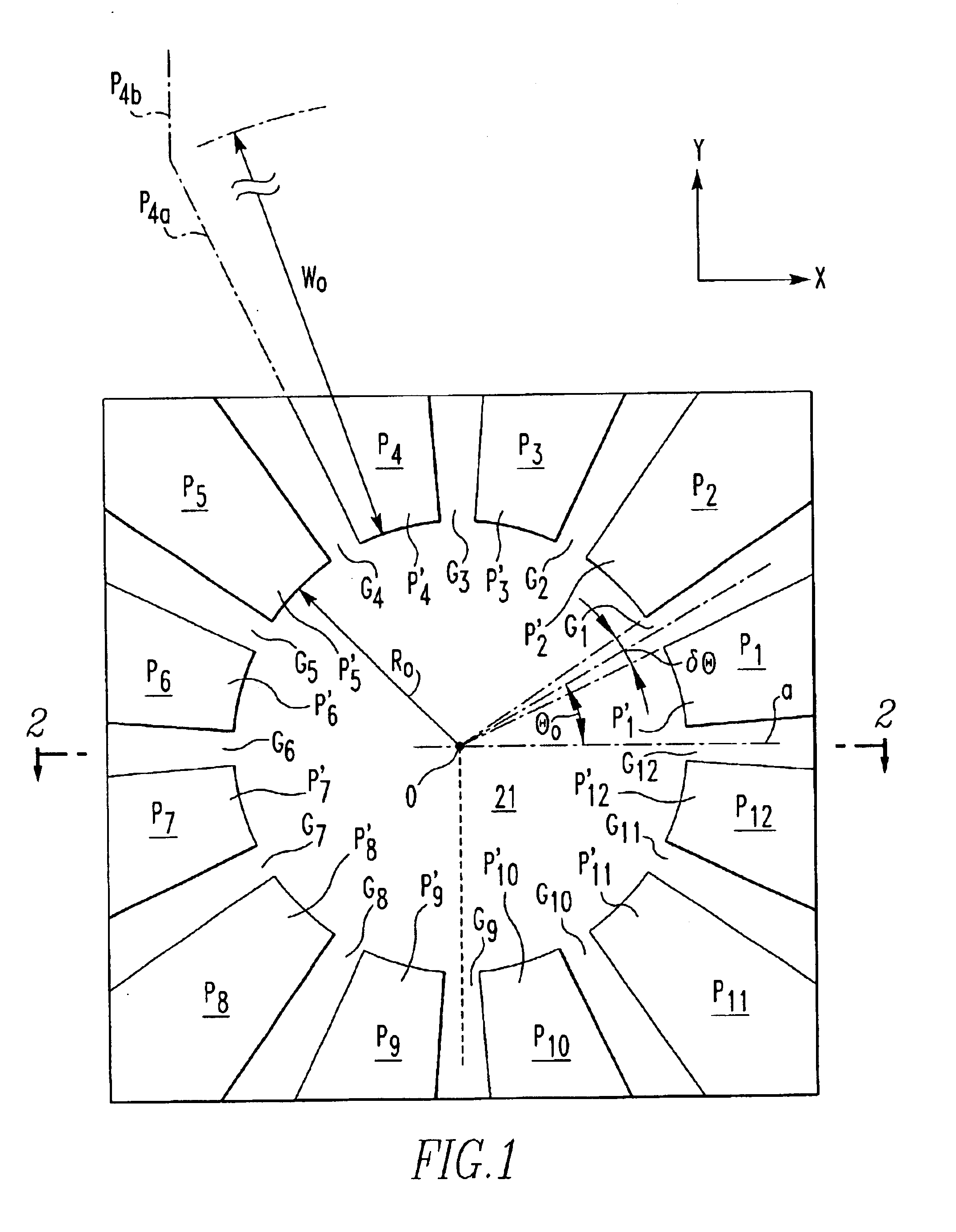Wien filter and electron microscope using same
a filter and electron microscope technology, applied in the direction of instruments, mass spectrometers, beam deviation/focusing by electric/magnetic means, etc., can solve the problems of inability to place a number of power supplies in locations at high electric potential, inability to put tang's filter into practical use, and inability to achieve secondary aberration. , to achieve the effect of less secondary aberration
- Summary
- Abstract
- Description
- Claims
- Application Information
AI Technical Summary
Benefits of technology
Problems solved by technology
Method used
Image
Examples
Embodiment Construction
Wien filters according to embodiments of the present invention are hereinafter described by referring to FIGS. 1-5.
Referring to FIGS. 1-4, there is shown a Wien filter according to one embodiment of the present invention. Generally, this filter has an optical axis O parallel to the Z-axis direction, and produces at least a dipole electric field E1 in the X-axis direction and a dipole magnetic field B1 in the Y-axis direction. The filter is fitted with 12 poles P1 to P12 extending substantially parallel to the optical axis O. The front ends P1′ to P12′ of the poles P1 to P12 which face the optical axis O have a 12-fold rotational symmetry about the optical axis O within the XY-plane. The X-, Y-, and Z-axes are mutually orthogonal Cartesian axes. The 12 poles P1 to P12 are made of a magnetic material such as iron, nickel, or Permalloy. The Wien filter is described in further detail below.
As shown in FIGS. 1 and 2, the Wien filter according to this embodiment has the 12 poles P1 to P12...
PUM
 Login to View More
Login to View More Abstract
Description
Claims
Application Information
 Login to View More
Login to View More - R&D
- Intellectual Property
- Life Sciences
- Materials
- Tech Scout
- Unparalleled Data Quality
- Higher Quality Content
- 60% Fewer Hallucinations
Browse by: Latest US Patents, China's latest patents, Technical Efficacy Thesaurus, Application Domain, Technology Topic, Popular Technical Reports.
© 2025 PatSnap. All rights reserved.Legal|Privacy policy|Modern Slavery Act Transparency Statement|Sitemap|About US| Contact US: help@patsnap.com



